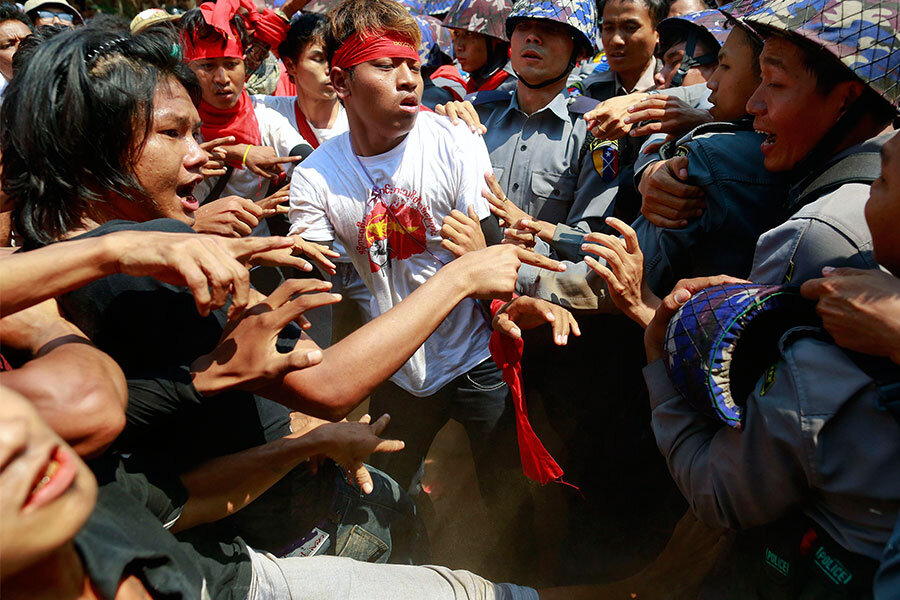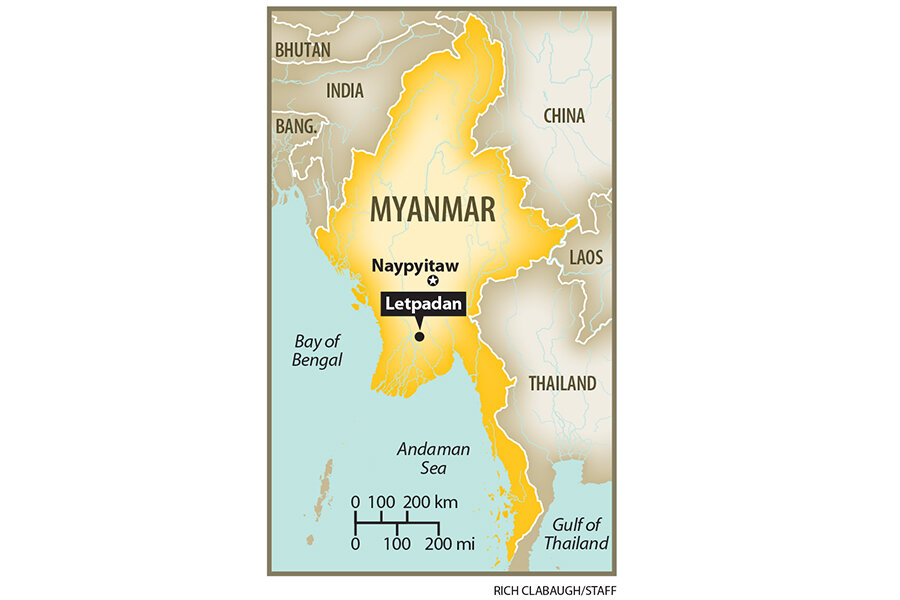In Myanmar, batons fly as student protesters meet harsh response
Loading...
| Letpadan, Myanmar
Hundreds of Myanmar police struck out violently against university students and activists protesting a new education law, hitting and dragging them away to trucks, and bringing an ugly end to a month of demonstrations in this small town.
The government says its reforms will give universities more autonomy and allow for an independent body to coordinate their functions. Myanmar once had one of the best university systems in Southeast Asia, but standards fell sharply during nearly five decades of military rule.
But students say the new law will curb academic freedom, weaken the role of professors and student unions, and centralize an anti-democratic authority over universities. Their protests have spread across the country, and many protesters have worn symbolic straw hats and sung songs that hearken back to historic democratic uprisings in 1988.
In Letpadan today groups of police ran down fleeing students, chasing them into a Buddhist temple, into local rural houses, and across farmland. Police officers swung black batons at the heads of protesters and punched and kicked them. Non-uniformed men also attacked the students with sticks.
The protest started out quietly in the morning with about 75 students and activists and 14 Buddhist monks sitting in front of a police barricade. Students waved bright red flags emblazoned with a golden fighting peacock, a national symbol since the time of the Burmese monarchy. Students punched the air as they shouted: “We don’t need a new education law. We need democratic education.” One group held a large cloth sign simply proclaiming “Democracy."
The protests here begun more than a month ago in a monastery after the government refused to allow the students permission to march to Yangon, the capital, 90 miles to the south, to protest the education law.
Police and students nearly reached an agreement that would allow protesters to board government-provided vehicles for the ride to Yangon. Yet talks broke down when authorities insisted mid-day the group could not carry their flags. Several hundred police continued to block the students from leaving the closed-off area just outside the monastery. By early afternoon the two sides began to hurl water bottles, rocks and debris at each other and the police visibly angered and escalated into more aggressive behavior.
“The excessive use of police force against students and other protesters is a sickening escalation in official intolerance of dissent, and is a throwback to the dark days of military rule,” said David Mathieson of Human Rights Watch. “This violence will be condemned by most people in Burma, who should be stoutly supported by international outrage.”
“What we have seen today is no different from how the previous regime behaved, and shows just how shallow Burma's reforms really are,” said Mark Farmaner of Burma Campaign UK, a Britain-based human rights organization. “These attacks on the students were widely predicted, yet the UK, USA, and EU have been virtually silent, rather than making clear that use of force would have consequences.”
One student faced police lines today holding a monk's alms bowl turned upside down over his head, a Burmese symbol of protest borrowed from Buddhist monks who marched through Yangon in 2007, and held overturned bowls to symbolize their break with the government.
The scene turned ugly when the frustrated protesters attempted to force their way out of the barricade. Dozens of students, faces straining from the effort, pushed against the police lines. When that failed, they pulled away barbed-wire police barricades, leaving no barrier between protesters and police.
Some students injured in the fracas were carried by friends to waiting ambulances. Many were crying on the road.
Phyoe Phyoe, a student leader, says she is dejected after the today's agreement to protest in the capital fell through. She criticized the government for failing to keep its promise. “We’ll have to do what we can in Parliament to try to stop the approval process now,” she says.








